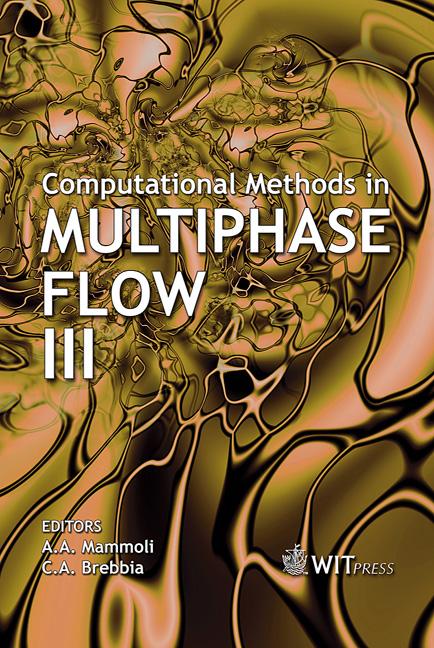Influence Of The Interfacial Pressure Jump Condition On The Simulation Of Horizontal Two-phase Slug Flows Using The Two-fluid Model
Price
Free (open access)
Transaction
Volume
50
Pages
11
Published
2005
Size
464 kb
Paper DOI
10.2495/MPF050121
Copyright
WIT Press
Author(s)
J. N. E. Carneiro, A. J. Ortega & A. O. Nieckele
Abstract
The two-fluid model has been widely used on the simulation of two-phase flows in pipelines. The model consists of two sets of conservation equations of mass and linear momentum for the liquid and gas phases on its transient, onedimensional form. The slug capturing methodology involves the numerical solution of the equations using a finite volume formulation, which is capable of naturally predicting the onset of slugging from the stratified flow regime, as well as the growth and collapse of the slugs. However, the existence of a region where the flow equations are ill-posed restricts the range to which a valid solution is obtained. The ill posedness region depends on the modeling of the interfacial closure relations. In the present work, the influence of an interfacial pressure-jump condition in the solution was investigated. Keywords: slug-flows, one-dimensional, horizontal, pressure-jump. 1 Introduction Two-phase flow in the slug pattern can be found in several engineering applications, such as flow of hydrocarbons through pipelines, liquid-vapor flow in power-plants, etc [1]. The slug is a flow pattern which is highly intermittent, it is formed by sequences of large gas bubbles followed by packs of liquid (slug) flowing in random fluctuating frequencies [2,3]. The slug pattern can be formed in horizontal and inclined pipelines from a stratified pattern by basically two mechanisms: the natural growth of
Keywords
slug-flows, one-dimensional, horizontal, pressure-jump.





